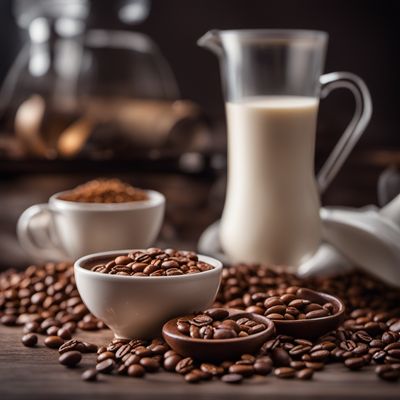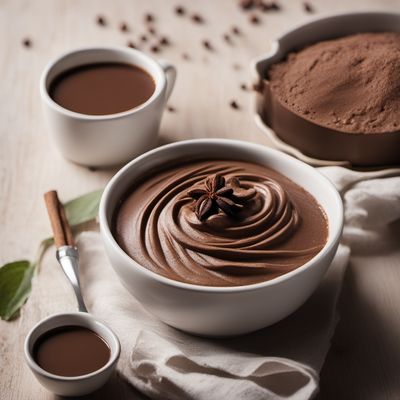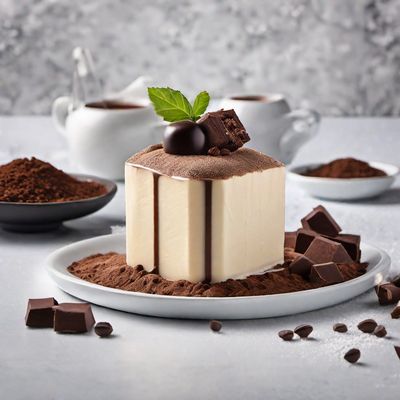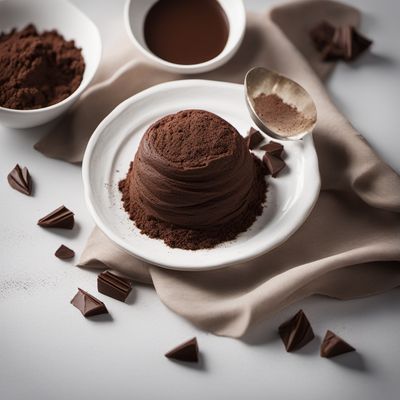
Ingredient
Coffee espresso (beverage)
The Elixir of Energy
Coffee espresso is a highly concentrated form of coffee made by forcing hot water through finely ground coffee beans. It is known for its strong flavor, rich aroma, and velvety texture. The dark brown liquid is typically served in small quantities due to its high caffeine content.
Origins and history
Coffee originated in Ethiopia and has a long history dating back to the 9th century. It spread to the Arabian Peninsula and eventually gained popularity worldwide. Today, coffee is an integral part of various cultures and is grown in several regions around the world.
Nutritional information
Coffee espresso is low in calories and contains essential nutrients like riboflavin, niacin, and magnesium. It provides a temporary energy boost due to its caffeine content.
Allergens
Coffee espresso may cause allergic reactions in individuals sensitive to caffeine. It is also not recommended for people with certain medical conditions or those who are pregnant or breastfeeding.
How to select
When selecting coffee espresso, opt for freshly roasted beans that have a strong aroma. Look for beans that are dark and oily, as they tend to produce a more intense flavor. Additionally, check the roast date to ensure freshness.
Storage recommendations
To maintain the freshness of coffee espresso, store it in an airtight container in a cool, dark place. Avoid exposure to moisture, heat, and light, as they can degrade the quality of the beans. It is best to grind the beans just before brewing to preserve the flavor.
How to produce
Coffee plants require specific growing conditions, including a tropical climate, well-drained soil, and adequate sunlight. While it is challenging to grow coffee plants at home, it is possible to cultivate them in regions with suitable climates.
Preparation tips
Coffee espresso can be prepared using various methods, such as using an espresso machine, Moka pot, or French press. Experiment with different brewing techniques and ratios to find your preferred strength and flavor. Add milk, sugar, or other flavorings according to personal preference.
Culinary uses
Coffee espresso is commonly used to make a variety of coffee-based beverages, including cappuccinos, lattes, and macchiatos. It is also enjoyed on its own as a strong and invigorating shot of caffeine.
Availability
Coffee espresso is widely available in coffee shops, cafes, and supermarkets around the world. It is cultivated in countries such as Brazil, Colombia, Vietnam, and Ethiopia.
More ingredients from this category

Instant coffee (beverage)
The Essence of Caffeine in a Cup

Coffee (average strength) beverage
The Energizing Elixir

Coffee (strong) beverage
"Bold Brew: Unleashing the Power of Strong Coffee"

Coffee (weak strength) beverage
A Gentle Awakening

Iced coffee
Chilled Caffeine Delight

Coffee with milk or cream
The Perfect Blend of Boldness and Creaminess

Coffee beverage decaffeinated
The Art of Decaffeination: Unveiling the Secrets of Coffee
Recipes using Coffee espresso (beverage) » Browse all

Nouvelle Tiramisù
Elevated Layers of Delight: Nouvelle Tiramisù

Tuscan-inspired Caramel Pudding
Dolce Vita Caramel Delight

Decadent Chocolate Delight
Velvety French Chocolate Mousse

Classic Chocolate Bonèt
Decadent Italian Chocolate Pudding: Classic Bonèt Recipe

Creamy Coffee Delight
Espresso Dream: A Creamy Coffee Delight

Sachertorte
SacherTorta: An Italian Twist on a Classic Austrian Dessert

Italian Chocolate Cake
Decadent Italian Chocolate Delight

Molecular Gastronomy Tiramisù
The Molecular Twist: Tiramisù Reinvented

Tartufo di Pizzo
Indulgent Chocolate Truffle Delight

Affogato al Caffè
Velvety Espresso Delight

Herrencreme with a Twist
Decadent Delight: A Modern Twist on Herrencreme

Sachertorte
Decadent Chocolate Sachertorte with a Latin Twist